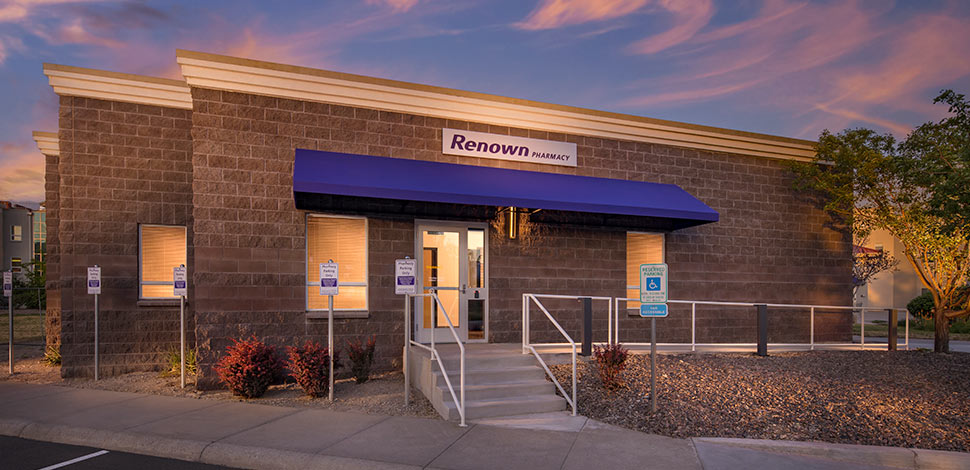Buscar
Results for 'forms'
Clear-
Name-Brand Medication vs. Generic: What's the Difference?
Most prescriptions meds are available in generic form. Find out the similarities and differences between the two and how to determine whether a generic is right for you. Approximately 80 percent of prescriptions sold today are generics. If you’re taking a prescription medication, chances are it’s a generic form of the brand-name drug. But are you getting the same quality in a generic medication? Do generics measure up? The answer in most cases is yes — generics, just like branded products, are regulated by the Food and Drug Administration. “To have a generic product approved by the FDA, the generic manufacturer must prove that its product is bioequivalent to the branded product,” explains Adam Porath, PharmD, BCPS AQ-Cardiology, BCACP and Vice President of Pharmacy Services. Basically, it has to function the same. “Generic products are extremely well tolerated and will provide the same results as using a branded product,” Porath says. Here’s how generics are the same as name-brand prescriptions: Generic products contain the same active ingredients. They produce the same desired clinical effect and accompanying side effects. Generics come in the same form as their branded counterparts: pill, liquid or inhaler, for example. Release into the bloodstream matches the name brand in timing and strength. Here’s how they differ: Generics generally cost less. Federal law requires generics have different names and look different: shape, size, markings and color. Generics contain different inactive ingredients, like binders, fillers and artificial colors. Different side effects with generics can usually be attributed to these additions. Why do generics cost less? When pharmaceutical companies develop a new drug, they are paying for research, development, clinical studies, marketing — in some cases it can cost more than $800 million and take 10 to 15 years to develop a new drug. “The manufacturers of branded medication products have to recoup their research and development costs,” Porath says. So companies are granted a limited patent to sell their drug without the competition of generic counterparts. “When patent exclusivity ends, the market is open for any generic manufacturer to make a competing product with FDA approval.” Without the same startup costs, companies can sell generics at 80 to 85 percent less. And because more than one company can produce the same generics, competition drives prices even lower.
Read More About Name-Brand Medication vs. Generic: What's the Difference?
-
Renown Pharmacy Vaccinations
Pharmacy Vaccinations by Appointment The Renown Pharmacy team can order additional vaccines with advanced notice. Please call 775-982-7737 before scheduling to check on availability. Renown Pharmacy provides vaccinations by appointment for the following: COVID-19 Bivalent vaccine (Pfizer-BioNTech) Hepatitis B vaccine (HEPLISAV-B) Human Papillomavirus (HPV) vaccine (Gardasil 9) Influenza/Flu vaccine (High dose for 65+ and standard dose for those six months to 64 years) Measles, Mumps, Rubella (MMR) Meningococcal (meningitis) vaccine (Menactra) Meningococcal B vaccine (Trumenba) Monkeypox vaccine (JYNNEOS) Shingles vaccine (Shingrix) Pneumonia vaccine (Pneumovax23 and Prevnar 20) Tetanus, provided though the tetanus, diphtheria and pertussis (Tdap) booster (Adacel) You may request appointments for any of these vaccines within MyChart
-
 Renown Pharmacy - South MeadowsRenown Pharmacy - South MeadowsHorarios
Renown Pharmacy - South MeadowsRenown Pharmacy - South MeadowsHorarios
Lun. a vie.8 a.m. - 5 p.m.Sáb. y dom.Cerrado -
Fall Skincare and Sunscreen Tips
According to the Skin Cancer Foundation, higher altitude increases the risk of sun-induced skin damage. UV radiation exposure rises 4 to 5 percent every 1,000 feet above sea level. In addition, snow reflects up to 80 percent of the UV light from the sun, meaning that you are often hit by the same rays twice. This only increases the risk of damage. If you're among the 58 percent of adult Americans who choose not to wear sunscreen, you may be even less likely to apply sunscreen during the fall and winter. Experts at the William N. Pennington Cancer Institute, explain that exposure to the sun happens when we least expect it, like during our daily commute. The ultraviolet A (UVA) rays can penetrate the windows of your car, office or home and get deep into the dermis, the thickest layer of our skin. So what’s the solution to preventing skin damage — or even worse, skin cancer — in the colder months? Apply, then Re-apply Sunscreen "There are a million sunscreens, so find one that feels good on your skin. Hydrating formulas are great for the drier months, so use a broad spectrum UVA and UVB lotion with a mix of ingredients to ensure you are fully protected." Still not sure which sunscreen to use? Look for the Skin Cancer Foundation Seal of Recommendation next time you’re out shopping for your sun protection products. A good rule of thumb is to use about one ounce (a shot glass full) and re-apply every two hours, or more often if sweating. Also, make sure to: Follow directions and shake the bottle before using. Make sure all skin is covered (including neck, ears and lips). For people with thin or thinning hair, apply to the scalp as well. Carry your favorite bottle of sunscreen with you at all times. Skiers, snowboarders, snowshoers, sledders, snow shovelers and winter enthusiasts take note: When spending time out the snow, we recommend a sport sunscreen with an SPF of at least 30.



